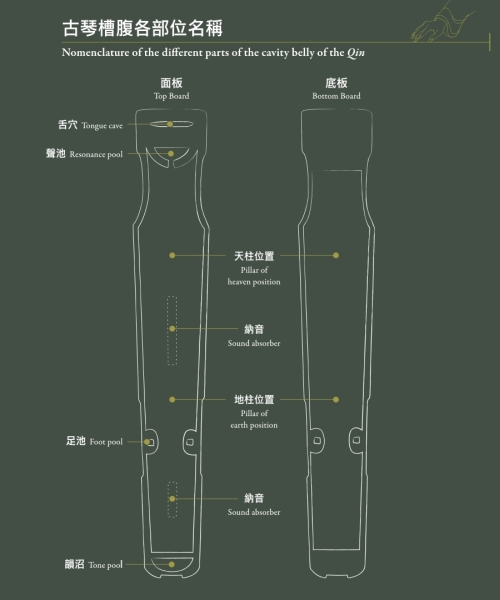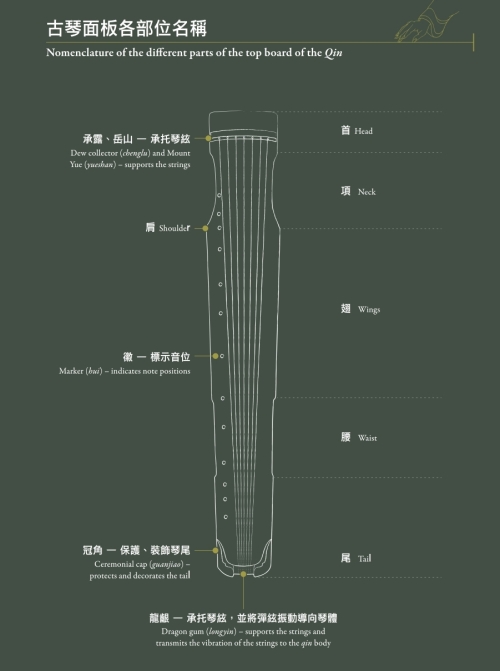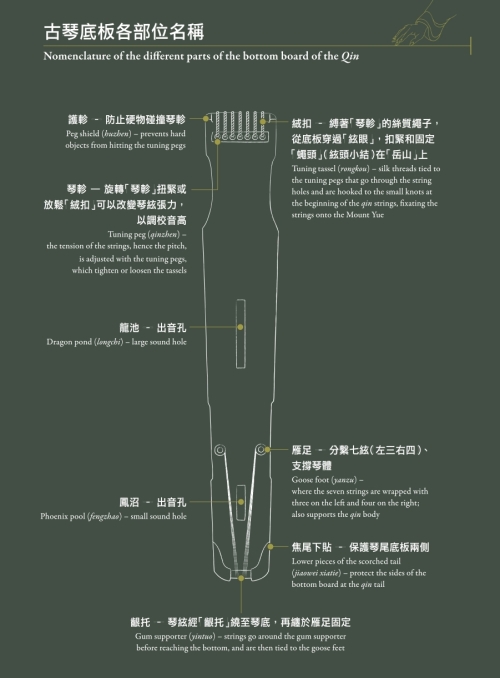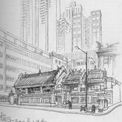An average qin measures between 120-130 cm long. The wider part is called the “head” and the tapered end, the “tail”. The qin body comprises a top board, a bottom board and a cavity belly (caofu). The top board is slightly curved and inlaid with 13 markers (hui) to indicate note positions. The bottom board is thinner and flat, with sound holes in the middle and at the end known as the “dragon pond” and the “phoenix pool”, respectively.
The resonating hollowed out area in the qin body is known as the “cavity belly’’, where the two pillars at the qin shoulder and waist connecting the top board and the bottom board can be found. The pillar of heaven (tianzhu) is cylindrical, while the pillar of earth (dizhu) is square in shape, symbolising the “round sky and the square earth” concept in Chinese culture. The two pillars help to transmit sound vibrations. In some “cavity bellies”, there are two crescent concavings known as the “resonance pool” (shengchi) and the “tone pool” (yunzhao) located at the head and the tail, respectively. The two concavings are designed for tonality. Two protrusions can be found on the top board inside the “cavity belly”. Known as the “sound absorbers” (nayin), they have positions and shapes corresponding to the bottom board’s “dragon pond” and “phoenix pool”. Ancient people believed that they could make qin sounds “linger with after tones”. Occasionally, a small “tongue cave” (shexue) would be hollowed out inside the qin head to improve resonance.








